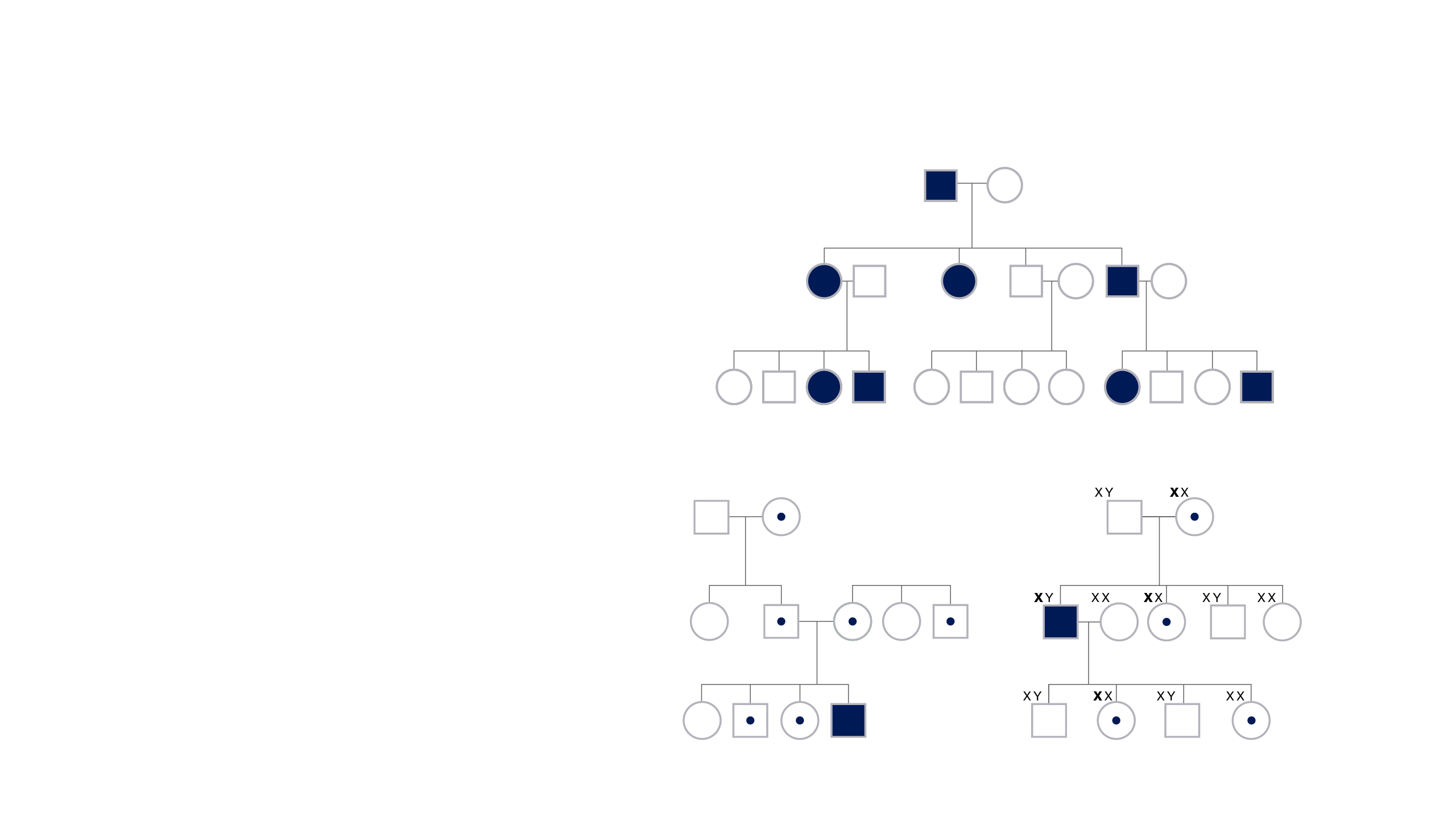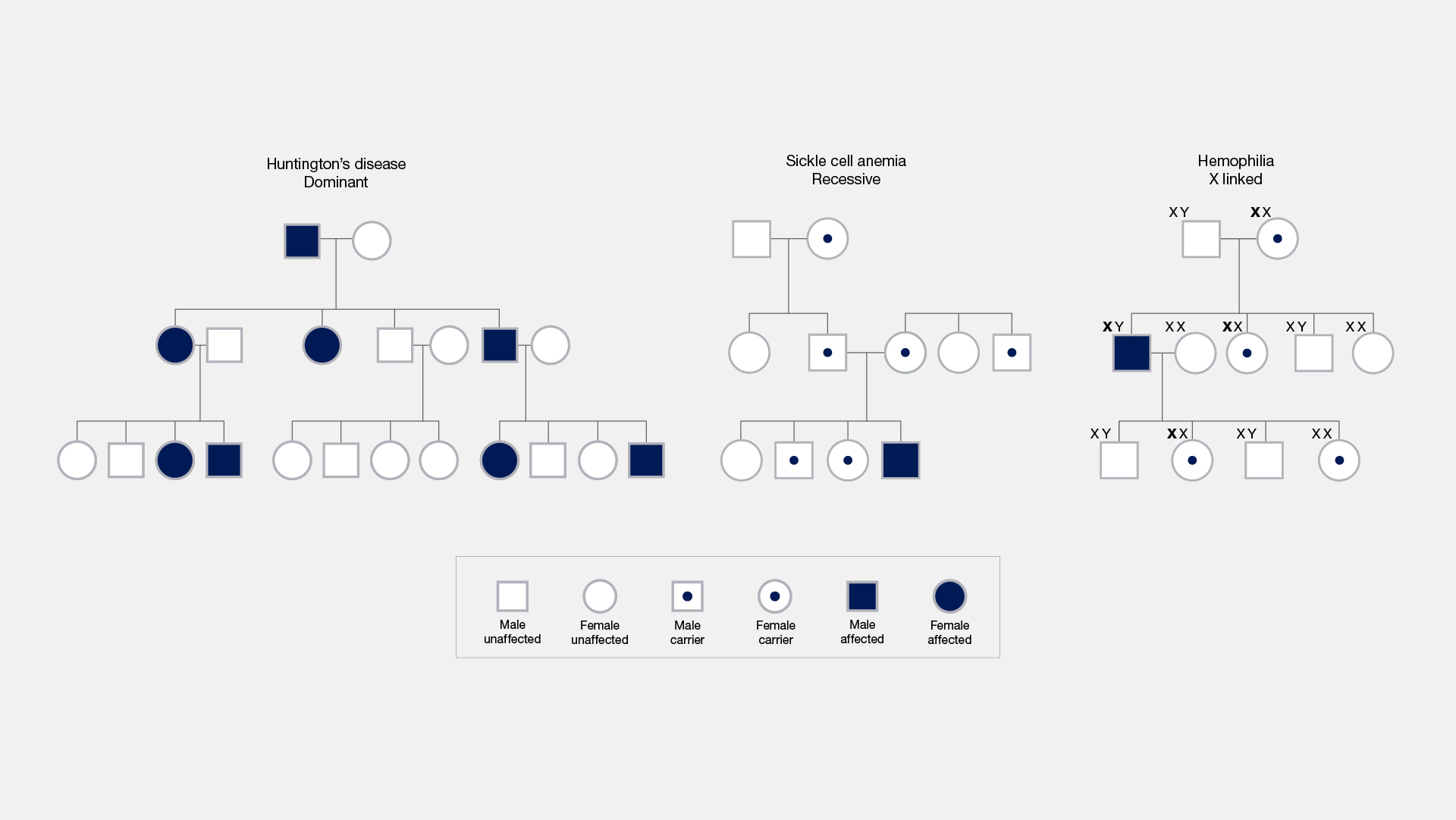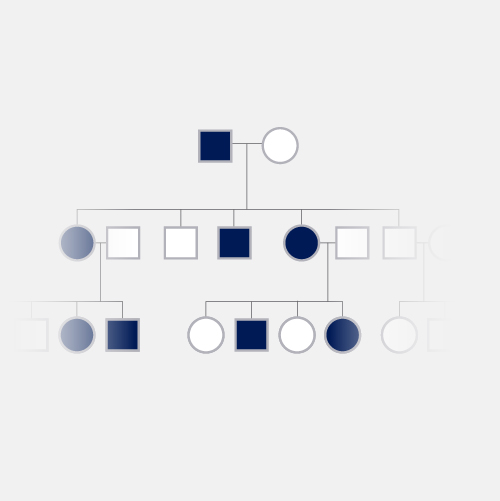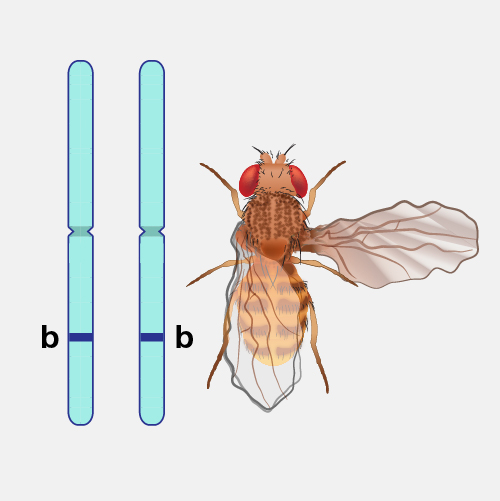
Mendelian Inheritance
Definition
Mendelian inheritance refers to certain patterns of how traits are passed from parents to offspring. These general patterns were established by the Austrian monk Gregor Mendel, who performed thousands of experiments with pea plants in the 19th century. Mendel’s discoveries of how traits (such as color and shape) are passed down from one generation to the next introduced the concept of dominant and recessive modes of inheritance.

Narration
Mendelian Inheritance. This is one of those classic textbook terms that any student in a basic genetics class will learn. In textbooks, you often see pictures of plants or mice with certain Mendelian traits. This became much more real to me when I worked in a fruit fly lab in college and we were searching for mutations that correlated with smooth or rough surfaces of their eyes. We literally spent hours counting flies under the microscope to carefully track the numbers of flies in each category. Of course, it's important to note that not every trait is easily observable. Also, it's interesting that some Mendelian traits occur so rarely that new variants are being discovered all the time. It's a fascinating area of current research.

Lead Extramural Training Program Director
Training, Diversity and Health Equity Office




